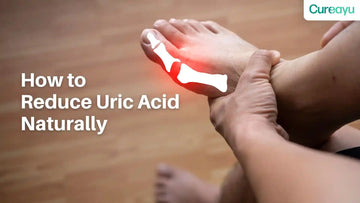Whether it’s summer or winter, UV rays don’t take a break. That’s why using SPF is more than just a skincare trend—it’s a necessity. If you’ve ever asked yourself, “What is SPF?”, you’re not alone. Many people use sunscreen daily without fully understanding how SPF works or which level is best for their skin.
In this guide, we’ll break down what SPF is, how it works, the difference between various SPF levels like SPF 50, and how you can get the best sun protection for your face and body. Plus, we’ll introduce you to a product that combines sun defense with skin-nourishing ingredients.
Also Read: Skin Problems: Causes, Symptoms, and Effective Solutions
What Is SPF?
SPF, or Sun Protection Factor, is a measurement used to indicate how well a sunscreen protects your skin from UVB rays—the type of ultraviolet radiation responsible for sunburn, skin aging, and even skin cancer. The SPF number tells you how long the sun’s UV radiation would take to redden your skin when using the product versus not using any at all. For example, an SPF 30 sunscreen theoretically allows you to stay in the sun 30 times longer without burning compared to no protection. But it’s important to remember that SPF does not offer unlimited protection. It works best when applied correctly and reapplied every two hours, especially after sweating or swimming. When people search for what is SPF, they’re not just looking for a number—they’re looking for confidence in their skincare routine.
How SPF Works
Sunscreens contain active ingredients that either absorb, reflect, or scatter the sun’s rays. These ingredients work in two ways:
-
Chemical sunscreens (like Octinoxate and Benzophenone) absorb UV radiation, convert it into heat, and release it from the skin.
-
Physical sunscreens (like Titanium Dioxide) sit on top of the skin and reflect UV rays away from the surface.
Most modern sunscreens are hybrids, combining both types for broader protection. However, SPF values primarily reflect UVB protection, not UVA. So even if you’re using SPF 50, make sure the product is broad-spectrum for full coverage. UVA rays cause premature aging and penetrate deeper into the skin, while UVB causes immediate burning and redness.
Also Read: 6 Best Supplements for Glowing, Healthy Skin
Difference Between SPF Levels
Here’s a breakdown of common SPF levels and what they actually mean:
-
SPF 15
Blocks about 93% of UVB rays. Suitable for minimal sun exposure or indoor use. -
SPF 30
Blocks around 97% of UVB rays. Good for everyday protection during casual sun exposure. -
SPF 50
Blocks approximately 98% of UVB rays. Ideal for extended time outdoors and for sensitive or fair skin types. -
SPF 100
Blocks 99% of UVB rays. Offers slightly more protection but not a huge difference from SPF 50. Reapplication is still necessary.
Despite the numbers, no sunscreen can block 100% of UV rays. That’s why consistent use and reapplication are key.
Which SPF Should I Use?
Choosing the right SPF depends on your skin type, environment, and exposure time:
-
If you’re indoors most of the day, SPF 15–30 is usually sufficient.
-
For daily outdoor exposure, opt for SPF 30 or 50.
-
If you have sensitive skin, use SPF 50+ with physical blockers like Titanium Dioxide.
-
If you have a darker skin tone, you still need SPF! Melanin does offer some protection, but not enough to prevent damage over time.
Look for products that go beyond just sun protection. For example, Yuvacen Botox Day Cream doesn’t just shield your skin from UV rays—it nourishes it. With ingredients like Octinoxate, Titanium Dioxide, Vitamin C, Vitamin E, Collagen, Grape Seed Extract, and Acetyl Hexapeptide-8, it delivers anti-aging benefits and hydration while offering excellent SPF protection. It’s a smart choice for those seeking sun protection that also supports youthful, radiant skin.
How To Use SPF Correctly
-
Apply generously: Use about a nickel-sized amount for the face and a shot glass full for the body.
-
Apply 15–30 minutes before sun exposure.
-
Reapply every 2 hours, or immediately after sweating or swimming.
-
Don’t forget ears, neck, back of the hands, and feet—often missed spots.
-
Use daily—even when it's cloudy or you're indoors near windows.
How To Get Maximum Sun Protection
|
Hours of Sun |
Recommended SPF Type |
Ideal for Skin Tone |
|
0–1 Hour |
SPF 15–30 |
Medium to Dark Skin |
|
1–3 Hours |
SPF 30 |
Light to Medium Skin |
|
3+ Hours |
Fair or Sensitive Skin |
|
|
Outdoor Sports |
SPF 50+ Water Resistant |
All Skin Types |
SPF Protection For Face
-
Use broad-spectrum SPF 50
Protects from both UVA and UVB rays, reducing the risk of wrinkles and hyperpigmentation. -
Choose non-comedogenic formulas
Especially important for oily or acne-prone skin to prevent breakouts. -
Look for added skincare benefits
Products like Yuvacen Botox Day Cream combine sun protection with collagen, peptides, and antioxidants to support youthful skin.
SPF Protection For Body
-
Apply on all exposed areas
Arms, legs, chest, and back need protection too—not just the face. -
Use water-resistant SPF
Ideal for swimming or sweating. Always reapply after 40–80 minutes of water exposure. -
Use spray SPF for easy reach
Especially useful for areas like the back or shoulders.
Also Read: Managing Wrinkles on Face: Causes, Symptoms, Treatments, and Prevention
Final Words
Understanding what is SPF and how it protects your skin is the first step toward long-term skincare success. Whether you're dealing with harsh sunlight or indoor UV exposure, the right SPF makes a world of difference. From preventing premature aging to protecting against skin cancer, it’s a simple habit with lifelong benefits.
While SPF 50 offers excellent sun protection, don’t stop there. Choose a product that multitasks—like Yuvacen Botox Day Cream—which delivers SPF coverage along with peptides, antioxidants, and hydration. It's the perfect blend of skincare and sun defense, especially if you want radiant, healthy skin year-round.
FAQs
1. Which is better, SPF 30 or 50?
SPF 50 offers slightly more protection than SPF 30, blocking about 98% of UVB rays versus 97%. It’s better for extended outdoor exposure or sensitive skin.
2. Is SPF 50 good for face?
Yes! It provides strong protection and is especially beneficial for people prone to sunburn or with fair, sensitive skin.
3. Is SPF 50 enough for Indian skin?
Absolutely. Indian skin, while more melanin-rich, still needs protection from UV rays. SPF 50 is excellent for daily use, especially in tropical climates.
4. What happens if I use SPF 50 every day?
Daily use of SPF 50 helps prevent premature aging, sunburn, and skin damage. Over time, it keeps your skin tone even and reduces the risk of sunspots or melanoma.











